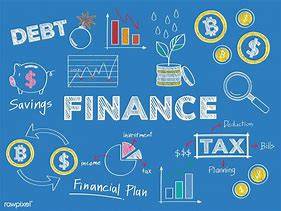Tax-Efficient Investing: How to Maximize Your After-Tax Returns
In the world of investing, the goal is not only to grow your wealth but also to keep as much of it as possible. This is where tax-efficient investing comes into play. By strategically managing your investments and understanding how taxes impact your returns, you can significantly enhance your after-tax income. Here are some effective strategies to consider when aiming for tax-efficient investing.
1. Understand Taxation on Investment Income
Before diving into tax-efficient strategies, it’s essential to understand how different types of investment income are taxed:
Capital Gains:
When you sell an asset for more than its purchase price, you incur a capital gain. Short-term capital gains (assets held for one year or less) are taxed at ordinary income rates, while long-term capital gains (assets held for more than one year) benefit from lower tax rates, typically ranging from 0% to 20% depending on your income bracket.
Dividends:
Dividends can be classified as qualified or non-qualified. Qualified dividends, which meet certain criteria, are taxed at the lower long-term capital gains rate, while non-qualified dividends are taxed at your ordinary income tax rate.
Interest Income:
Interest earned from bonds and savings accounts is typically taxed at ordinary income rates, making it one of the least tax-efficient forms of investment income.
2. Utilize Tax-Advantaged Accounts
One of the best ways to maximize after-tax returns is by taking advantage of tax-advantaged investment accounts:
Retirement Accounts:
Contributing to accounts like 401(k)s and IRAs allows your investments to grow tax-deferred. With a traditional IRA, you may also get a tax deduction on your contributions. With a Roth IRA, you pay taxes on your contributions now, but qualified withdrawals are tax-free in retirement.
Health Savings Accounts (HSAs):
If you’re eligible for an HSA, contributions are tax-deductible, and withdrawals for qualified medical expenses are tax-free. HSAs can also serve as a long-term investment vehicle since unused funds can roll over year after year.
529 Plans:
For education savings, 529 plans allow you to grow your investment tax-free, with withdrawals for qualified education expenses also being tax-free.
3. Optimize Asset Location
The principle of asset location involves placing different types of investments in the most tax-efficient accounts. Here’s how to approach it:
Taxable Accounts:
Invest in tax-efficient assets, such as index funds and ETFs, which typically generate fewer taxable events compared to actively managed funds. Additionally, holding investments that generate qualified dividends or long-term capital gains can be beneficial in these accounts.
Tax-Deferred Accounts:
Use these accounts for investments that generate high taxable income, such as bonds or actively managed mutual funds. Since these accounts are tax-deferred, you won’t pay taxes on the income until you withdraw the funds.
Tax-Free Accounts:
Consider holding investments that are likely to generate the highest tax burdens—like high-yield bonds or real estate investment trusts (REITs)—in tax-free accounts like Roth IRAs.
4. Harvest Tax Losses
Tax-loss harvesting is a strategy used to offset capital gains with losses, thereby reducing your overall tax liability:
How It Works:
If you sell an investment for less than what you paid for it, you can use that loss to offset gains from other investments. For example, if you have a $5,000 gain on one investment and a $2,000 loss on another, you only owe taxes on a $3,000 gain.
Carryover Losses:
If your total capital losses exceed your capital gains for the year, you can use up to $3,000 of those losses to offset ordinary income. Any remaining losses can be carried forward to future tax years.
5. Be Mindful of Investment Turnover
Investment turnover refers to the frequency with which assets in a portfolio are bought and sold. Higher turnover can lead to increased taxable events:
Active vs. Passive Management:
Actively managed funds typically have higher turnover rates, resulting in more short-term capital gains. Consider low-turnover, passive investment strategies, such as index funds or ETFs, which tend to be more tax-efficient due to their lower transaction costs and fewer taxable events.
Long-Term Investing:
Embrace a buy-and-hold strategy to minimize turnover. Holding investments for longer than one year can qualify you for lower long-term capital gains tax rates.
6. Consult a Tax Professional
Tax laws can be complex and subject to change. To maximize your after-tax returns, it may be beneficial to consult with a tax professional or financial advisor. They can provide personalized advice tailored to your financial situation and help you navigate the nuances of tax-efficient investing.
7. Stay Informed on Tax Policy Changes
Tax regulations can evolve, and staying informed about changes in tax policy can help you adjust your investment strategies accordingly. Regularly reviewing your investments and how they are taxed will ensure that you remain tax-efficient in your approach.


